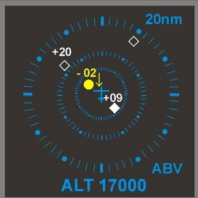33 Years In The Making: The Pilot’s Role In Collision Avoidance, Part 2
- May
- 02
- 2016
- Advanced Aircrew Academy
 The first post in this series introduced the recently published Federal Aviation Administration (FAA) Advisory Circular (AC) 90-48D Pilots’ Role in Collision Avoidance. In this second post, we’ll look at best practices identified in AC 90-48D for avoiding midair collisions (MAC) and near midair collisions (NMAC).
The first post in this series introduced the recently published Federal Aviation Administration (FAA) Advisory Circular (AC) 90-48D Pilots’ Role in Collision Avoidance. In this second post, we’ll look at best practices identified in AC 90-48D for avoiding midair collisions (MAC) and near midair collisions (NMAC).
Statistics indicate that the majority of MAC and NMAC occur in good weather and during daylight hours. The FAA has several significant programs designed to reduce the potential for MAC and NMACs, but even after all these years, the See-and-Avoid Concept is still the number one priority.
Our responsibility is to fly the aircraft safely. We should remain alert to all traffic movement within our field of vision, as well as periodically scan the entire visual field outside of the aircraft to ensure detection of conflicting traffic. For improved safety and to aid in collision avoidance, the following safety equipment is recommended:
- High-intensity anti-collision white strobe lights visible from all directions
- Pulse light (collision avoidance) systems for the aircraft landing lights
- Dual VHF aircraft communications radios
- Traffic advisory systems (TAS), Traffic Alert and Collision Avoidance System (TCAS) I, TCAS II, or those aircraft equipped with Automatic Dependent Surveillance-Broadcast (ADS-B) In and display capability
Something that has not changed since 1983 is that a significant number of MAC and NMAC have occurred within the traffic pattern environment. Pilots are reminded to:
- Maintain contact with the tower when operating at tower-controlled airports.
- Look for other aircraft when entering a known traffic pattern at a non-towered airport.
- Observe the airport layout and local traffic. When approaching an unfamiliar airport, fly over or circle the airport at least 500 feet above traffic pattern altitude (usually at 2000 feet or more above the surface) to observe the airport layout, any local traffic in the area, and the wind and traffic direction indicators. Never descend into the traffic pattern from directly above the airport.
Our modern technology and Traffic Avoidance systems are a great improvement and have helped reduce MAC; however, the importance of devoting maximum attention to collision avoidance while conducting flight operations in today’s increasing air traffic environment cannot be overemphasized. One MAC is one too many!
For further information on documents and events related to collision avoidance and visual scanning techniques, visit http://www.faasafety.gov. Advanced Aircrew Academy’s TCAS eLearning module has been updated with the new information in AC 90-48D. Check out the details at https://aircrewacademy.com/tcas.

